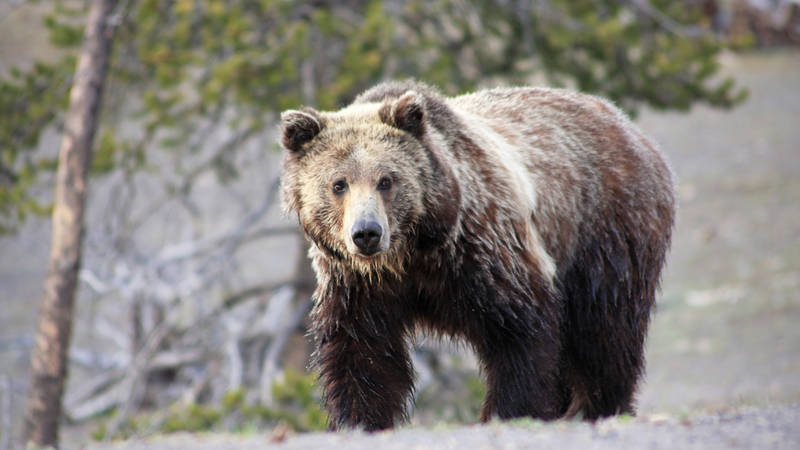One of Virginia's most popular national parks is a haven for native fish, but warming waters could prove devastating for this keystone species.
This story is the first in a series on ways that climate change and air pollution are having unexpected effects in our national parks. Next month, Alex Rudee explores ozone pollution and asthma at Yosemite.
Seth Coffman is a fisherman. Just the thought of fish puts a spring in his step. As I follow him down the bank of Beaver Creek, which runs through the small farm town of Ottobine, Virginia, I nearly have to jog to keep up.
“Looks like the water’s too muddy today. We’ll have to try again in a few weeks,” he tells me, disappointed, when I’m able to catch him.
Coffman had been hoping to survey trout here as part of the monitoring effort for a stream restoration project he’d led a couple years ago, one of many such projects he works on as a program manager with Trout Unlimited, a national organization that conserves cold water fisheries. But heavy rains the night before have made it impossible to see fish, or anything else, in the turbid stream.
So instead of catching fish, we talk about them.
“Last time I went in Shenandoah National Park this spring, I went fishing for brook trout,” he remembers. “I had a good time, caught several fish. The brook trout are usually eager to eat, to strike at a dry fly, that time of year.”
Coffman has lived in Shenandoah County, just west of Shenandoah National Park, his whole life. So it makes sense that he has a special affinity for the brook trout, Virginia’s only native species of trout. “They’re an iconic fish for the Appalachian Mountains,” he says. “Brook trout have been here for thousands of years.”
The species is also a critical part of its ecosystem. “Brook trout is a keystone species,” remarks Jim Schaberl, division chief of natural and cultural resources for Shenandoah National Park. “We look at it as an indicator for the health of cold water streams.”
Video by Alex Rudee/NPCA.
As brook trout streams in much of Virginia fall victim to development and land degradation, forces that Coffman battles daily in his restoration work with Trout Unlimited, the national park offers some of the best remaining brook trout habitat around. Research shows that brook trout do best in waters between 52º and 60º F. Shenandoah’s dense intact forests keep the mountain streams cool, helping the species thrive.
But even within the relative safety of the park, the brook trout is not immune to changes in the air and water.
One air pollutant that has harmed brook trout in the park is sulfur dioxide, which is emitted by industrial factories and coal-fired power plants. Sulfur dioxide is carried into Shenandoah National Park on wind currents, where it falls as acid rain, settles into the soil, and eventually washes into waterways.
According to Shenandoah National Park Trust President Susan Sherman, acid rain in the park got so bad during the 1980s and ‘90s that some streams turned “as acidic as lemon juice.” Thanks to the federal Acid Rain Program, established as an amendment to the Clean Air Act in 1990, sulfur dioxide emissions upwind of Shenandoah have decreased dramatically. However, the problem has not gone away. Air currents continue to carry sulfur dioxide emissions into the park from facilities in the region that burn fossil fuels. Many of the streams in Shenandoah also have yet to recover from the effects of pollutants deposited decades ago, preventing the full recovery of those aquatic ecosystems.
Meanwhile, brook trout in Shenandoah now face another serious threat: climate change.
Rising air temperatures mean warmer waters, and the species cannot survive in waters warmer than 75º F. Cold groundwater may help maintain lower temperatures in some streams, but under the most severe warming scenarios, even they will no longer be able to support brook trout.
A study sponsored by the American Fisheries Society found that well over half of brook trout habitat in the Southern Appalachians could be gone this century if warming is in line with projections. And if the warming is greater than expected? More than 97% of brook trout habitat could disappear.
That vision of the future is enough to rattle even a veteran park ranger like Schaberl. “That’s tough for me to swallow,” he admits. “When we start tearing apart these ecosystem functions, to me that’s really tearing apart the fabric of the Park Service and what people come here for.”

National Park Rangers Are Helping These 10 Animals and Plants Survive
National parks offer some of the last suitable habitats for a number of species and are home to creatures that exist nowhere else in the world. This means park staff…
See more ›With over 1.4 million visitors to the park last year, and millions more relying on the resources of the Shenandoah Valley in some way, climate change could have a cascading effect on the region.
“It’s not just about the living critters in the park,” says Sherman. “It’s an ecosystem that involves family life and culture and tourism and economy, and climate change is going to affect all of that.”
Coffman, who grew up fishing and splashing around in the Shenandoah River, may have a better sense than anyone else how climate change could impact family life in the Shenandoah Valley. “Angling is a big part of the valley,” he says. “People want to have that opportunity for their kids and their grandkids. And so to not see brook trout in streams they’ve always been in for the past 50 years is concerning.”
For his part, Coffman has begun taking his two children out to fish the Shenandoah River and other cold water streams. The kids may be more interested in wading and rock throwing than actual fishing for now, but Coffman knows the importance of patience in teaching, and practicing, angling.
Of course, patience is a virtue that we can’t afford when confronting the causes and impacts of climate change.
Stay On Top of News
Our email newsletter shares the latest on parks.
The same industrial factories and coal-fired power plants that contribute to sulfur dioxide pollution in Shenandoah National Park also pump out millions of tons of climate-warming greenhouse gases every year, which can remain in the atmosphere for hundreds of years. If we are to preserve fragile ecosystems like Shenandoah’s brook trout streams and minimize other catastrophic impacts of climate change, we must significantly reduce greenhouse gas pollution.
As a global phenomenon, climate change will require strong policy action at all levels, from local ordinances to international agreements, to drive down fossil fuel pollution. The U.S. has been slow to act, and many Americans still see climate change as distant or theoretical.
But for Coffman, the problem is tangible. How can he ensure that his children, and others like them, will still be able to fish for brook trout in the Shenandoah Valley decades from now?
“The ultimate thing you want to be able to do,” he tells me, “is to pass on the natural resources we’ve been able to enjoy in better shape for our kids.”
This story is part of a series on ways that climate change and air pollution are having unexpected effects in our national parks. Read about how air pollution is causing problems for visitors and ecosystems at Yosemite and how climate change is threatening the namesake cactus at Saguaro National Park.
About the author
-
 Alex Rudee Contributor
Alex Rudee ContributorAlex Rudee is a former intern with NPCA and a graduate student at Duke University’s Nicholas School of the Environment. He studies environmental economics and policy, with a focus on land conservation and climate policy.
-
General
-
- Park:
- Shenandoah National Park
-
- NPCA Region:
- Mid-Atlantic
-
-
Issues


